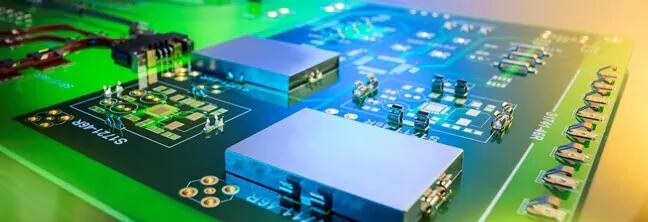
What is EMC Shielding?
Electromagnetic Compatibility (EMC) shielding is any method used to protect a sensitive signal from external electromagnetic signals, or preventing a stronger signal from leaking out and interfering with surrounding electronics. It can cover PCB elements such as IC chips and active components, or connectors and cables between PCBs.
Electromagnetic frequencies can affect many sensitive electronics, and can cause a wide variety of different issues from a simple hiss on a communication line, to a total disruption of a safety-critical signal. As such it affects a diverse range of sectors, including all consumer and industrial electronics, and into critical systems for military and emergency services.
Here’s everything that you need to know about EMC shielding in a nutshell.
How Does EMC Shielding Work?
The main purpose of effective EMC shielding is to prevent electromagnetic interference (EMI) or radio frequency interference (RFI) from impacting sensitive electronics. This is achieved by using a metallic screen to absorb the electromagnetic interference that is transmitted through the air. The shield effect is based on a principle used in a Faraday cage—the metallic screen completely surrounds either the sensitive electronics or the transmitting electronics. The screen absorbs the transmitted signals, and causes a current within the body of the screen. This current is absorbed by a ground connection, or a virtual ground plane.
By absorbing these transmitted signals before they reach the sensitive circuitry, the protected signal is kept clean of electromagnetic interference, maximizing shielding effectiveness. A good example is the smartphone. It is essential that EMC shielding protects the sensitive electronics in the device that make it process and display information from the phone’s transmitter.
What Materials Can Be Used for EMC Shielding?
Several techniques and materials can be used for EMC shielding, and the materials used depend on the type of electronics and frequencies involved. This is because the amount of signal reduction/blocking depends on the material used, the size of the shielded volume, the material thickness—each of these factors affects the range and strength of frequencies that can be absorbed by the shielding.
Some examples include:
- Metallic foil or plaited braid to shield equipment wires. Coaxial cable has this EMC shield built into the wire construction, underneath an outer insulation layer. Other wire bundles can be wrapped in foil, or ready-made cable braid applied over the whole construction. The connectors on the ends of the wire would also require metal covers, and the braiding or foil needs to be attached to the metal to give total coverage.
- For shielding on PCBs (known as Board Level Shielding or BLS), shielding typically consists of a PCB with a ground plane built into it, and a metal box (known as a shield can) placed over the sensitive or transmitting elements. The components are then completely surrounded by a Faraday cage arrangement.
- In devices such as audio speakers, an inner metallic casing would be used to successfully block EMI produced by nearby transmitting devices (such as microwaves and TVs).
Conductive paints and magnetic materials can also be used in environments where magnetic fields are below the 100kHz range. Other methods can include sheet metal, metal foam, conductive plastics, and mesh-metal screening.
Depending on the frequency, the shielding does not have to be a solid screen, but can have regularly placed holes, or even just be wire fencing. It is therefore important to understand exactly which part of the electromagnetic frequency spectrum needs to be guarded against in any particular application.
Example Applications of EMC Shielding
Here’s a look at some of the ways EMC shielding is used across a broad range of applications.
- EMC shielding is used to protect medical and laboratory equipment, where it is vitally important and potentially life-saving to disrupt and prevent signal interference. Anything from AM/FM emergency service transmission and other telecommunications, to data communications, theatre and ward patient monitoring equipment, and even in-body medical devices such as pacemakers.
- EMC shielding can prevent access to data stored on RFID chips or embedded in other devices.
- EMC shielding can be used in combination with air-gapped systems to increase and complement existing security measures, such as those used in military, government, and financial systems.
Ultimately, shielding is required where any sensitive electronic element requires isolation from the surrounding electromagnetic fields, or where a particular element is transmitting unwanted additional signals. In today’s technologically-dependent environment, every piece of electronics needs EMI/RFI protection.
